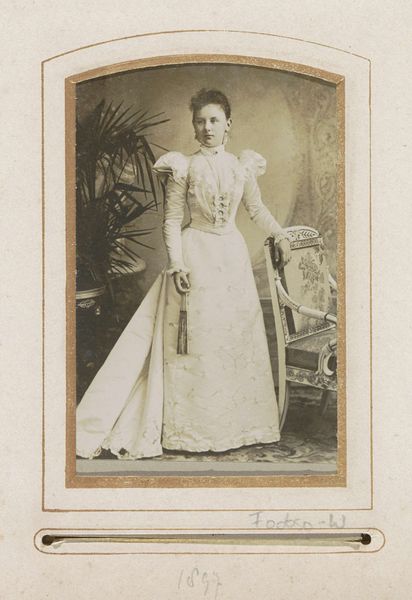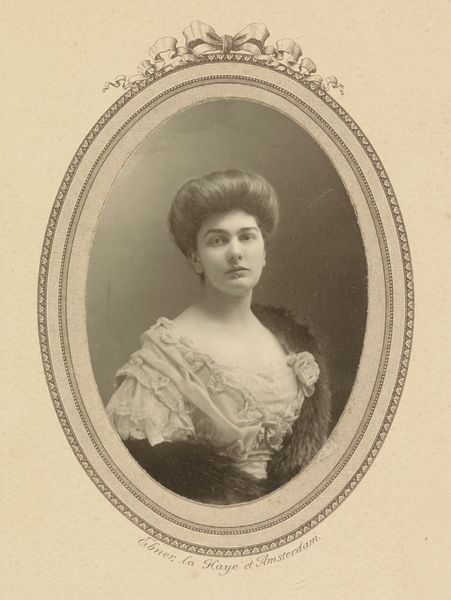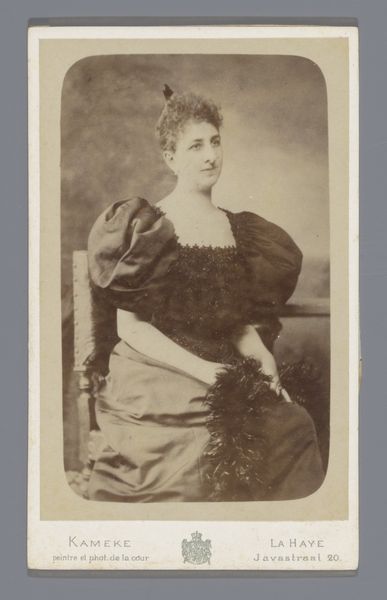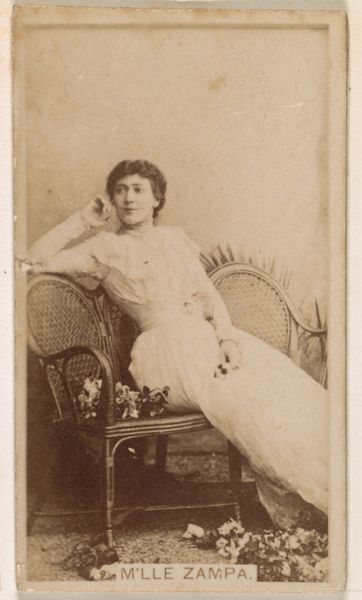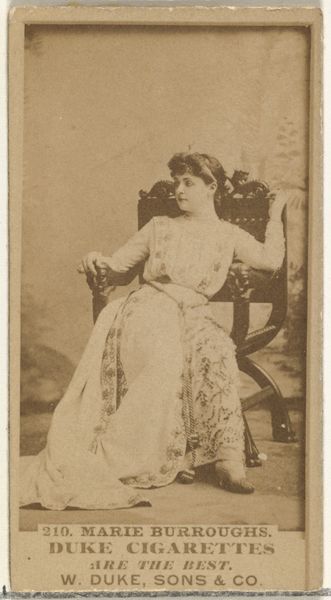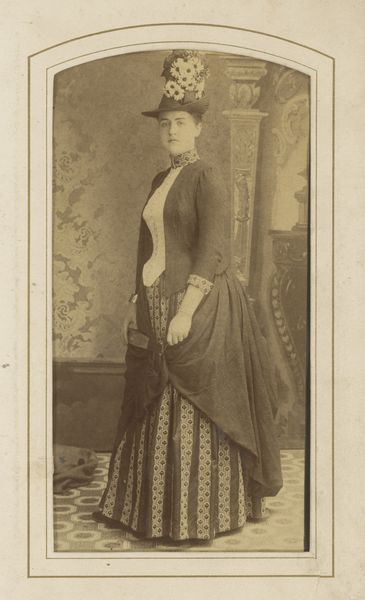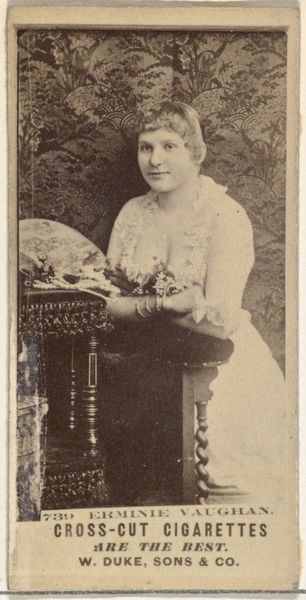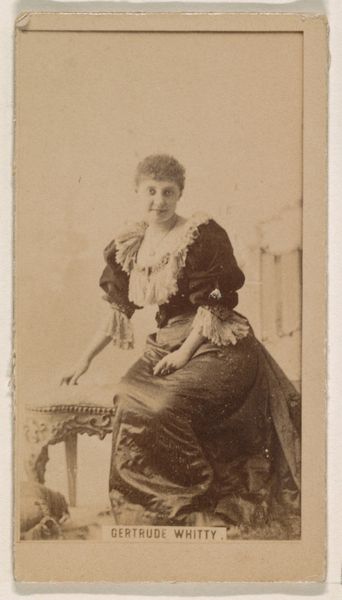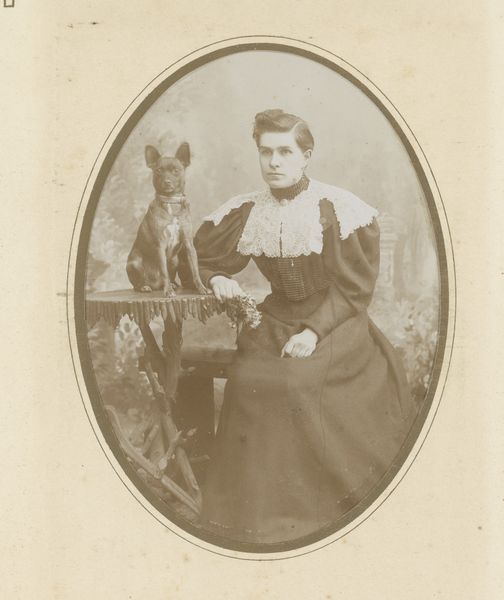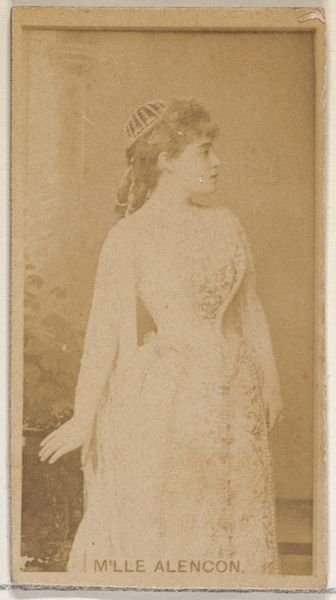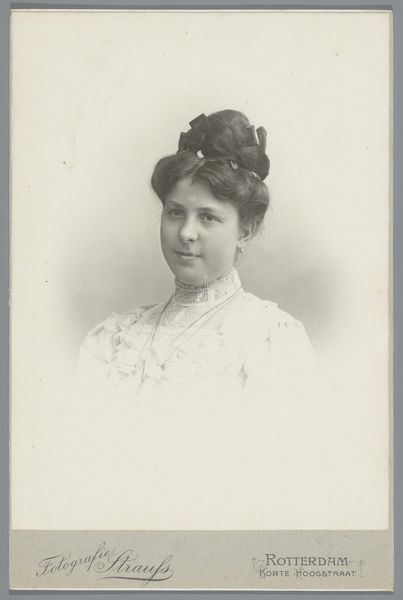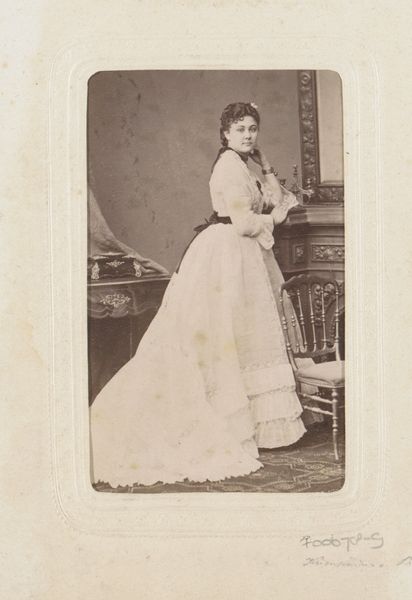
Portret van een vrouw, staand bij een tafel met boek in een decor 1880 - 1920
0:00
0:00
photography
#
portrait
#
table
#
book
#
photography
#
genre-painting
Dimensions: height 137 mm, width 98 mm
Copyright: Rijks Museum: Open Domain
Editor: This is "Portret van een vrouw, staand bij een tafel met boek in een decor," a photograph taken sometime between 1880 and 1920 by Photographie d'Amateur. I find the sepia tones give it a sense of faded elegance, almost like a glimpse into another era. What stands out to you in this photograph? Curator: Considering this through a materialist lens, I see more than faded elegance. The photograph itself, a material object produced through specific processes, speaks volumes about the rise of photographic technology and its impact on portraiture. Note the ornate backdrop, likely a painted canvas – a manufactured setting for constructing an image of bourgeois respectability. How does the sitter's clothing – that voluminous, manufactured fabric – contribute to this construction? Editor: So, it’s less about the woman herself and more about what the photograph, as an object, tells us about society at that time? The clothes definitely speak to wealth, but also maybe constrain the sitter in some way? Curator: Precisely. We need to consider the social context of photographic production and consumption. Photography democratized portraiture, making it accessible to a wider segment of society. But it also became a tool for reinforcing social hierarchies and ideals. Consider the labor involved in producing this image: the photographer, the manufacturer of the backdrop and the book that’s acting like a prop, even the labour expended making those elaborate sleeves. What’s being consumed here, and how? Editor: I see your point. We're consuming not just an image, but an idea of class and aspiration. The very act of posing for this picture meant subscribing to certain values. Curator: And this performative act would likely require significant financial capital. Also note how photography like this began impacting other art forms, such as portrait painting. Editor: That makes me look at it totally differently now. I thought I was seeing a nice picture of a lady. Now I see labor, economics, and the slow shift away from painted portraiture. Thanks! Curator: Indeed. By analyzing the materials, the processes, and the social context, we gain a much deeper understanding of the photograph and its cultural significance.
Comments
No comments
Be the first to comment and join the conversation on the ultimate creative platform.

